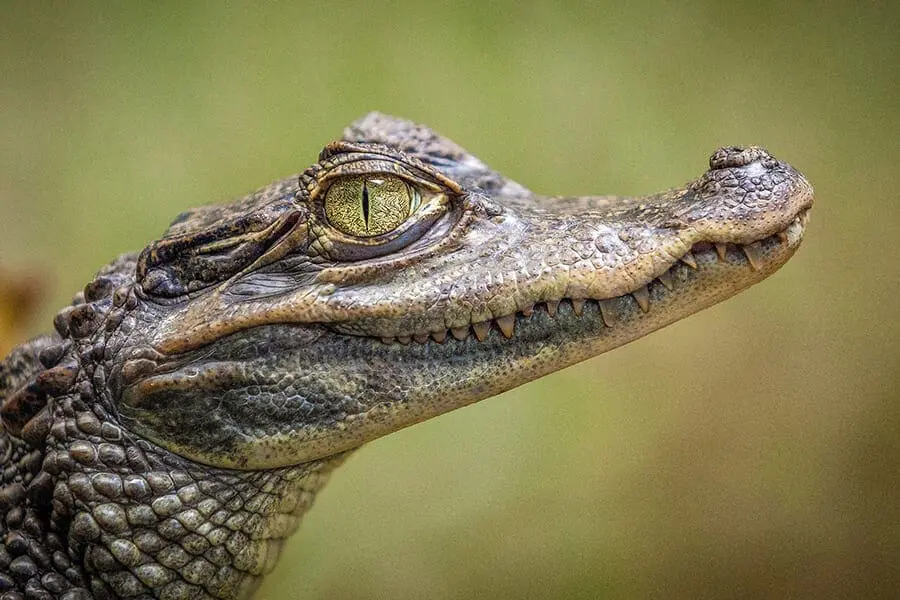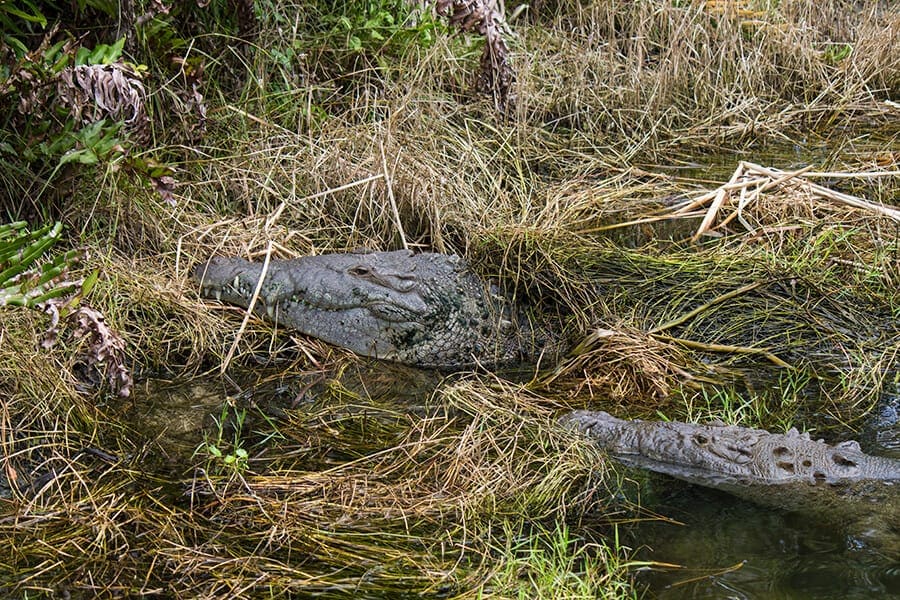

A juvenile American crocodile.
You’re familiar with those beady eyes peering from the surface of the water—crocodiles! Shy, reclusive species, these large, lizard-like creatures are known for their carnivorous appetite and powerful bite. Crocodiles are a living link to the age of the dinosaurs; crocodilian fossils have been traced back 200 million years!
There are 23 species of crocodile throughout the world, but you’re probably most familiar with the American crocodile. They live just a few hours away in south Florida, as well as the Caribbean and central America. American crocodiles live in brackish or saltwater areas, making wetlands a prime habitat. As are other reptiles, crocodiles are cold-blooded, meaning they rely on external sources of heat to regulate their body temperature; this is why they’re sometimes seen sunning with their mouths open.
The Zoo is home to two American crocodiles you can spot as you cross the bridges into our Wild Florida and La Selva loops. Lilly is our 31-year-old female who came to us from Gatorama. Golum, our 32-year-old male, came from Gatorland. Both arrived here back in December 1994 and have seen the Zoo evolve over the past two decades.

Lilly and Golum, our resident American crocodiles.
Crocodiles in the wild are often less fortunate than Lilly and Golum. Their numbers are dwindling rapidly as human populations continue to grow. The IUCN recognizes the American crocodile as a vulnerable species. Between the 1930s and 1960s, crocodile leather was a popular material for bags and belts. In 1979, the species was declared endangered and regulations have been passed to legally farm crocodiles for the skins. Now the major threat to wild populations is the loss of wetlands and estuaries as urban development increases.
American crocodiles are federally protected and monitored by Florida Fish and Wildlife Conservation Commission. Sharing a habitat with crocodiles can be perfectly safe if you practice smart and responsible behavior. As you would in the rest of Florida, swim only during daylight hours in areas designated as safe. Dispose of fishing gear and scraps in appropriate receptacles. Never taunt, touch, tease or attempt to move a crocodile. Don’t feed them, either—this creates an animal that no longer fears humans and may encourage them to approach other people for food in the future; since they can’t tell where the handout ends and the hand begins, this is extremely dangerous and a violation of state law.
These legendary beasts aren’t as ferocious as they seem. Though they sit atop the food chain, they play an integral role in balancing ecosystems through the species they eat. Scientists also recognize them as an indicator species of the Everglades because they are sensitive to hydrology, salinity and system productivity—in other words, there is a direct correlation between the health of the wetlands and the health of the crocodiles inhabiting that area! With your help, we can continue to ensure their survival for many generations to come. After all, they survived the Mesozoic Era—why shouldn’t they survive a few more million years?
